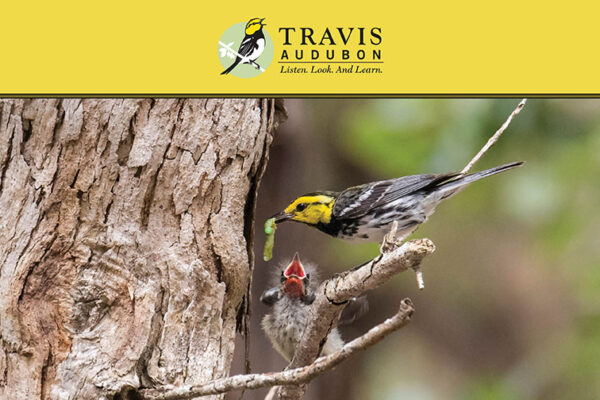By: Jean Warneke

John Cahill
I first met the Cahills while I was birding in Guatemala in 2017. JB Journeys runs a Guatemala Holy Week tour each year and I’d gone early to scout for a birding trip. I knew that the Golden-cheeked Warbler overwintered in the central part of the country so I hired a local guide for a day. I stayed in the Cobán area and my guide, Rudy Botzoc, and I traveled by public bus from one preserve to another. The birding was fabulous. I was surprised to see several private preserves set aside specifically for the protection of migrants. At one point, we heard a screech owl, got excited, but realized it was a tape that a birding group was using. Rudy pointed and said, “There is the best birder in Guatemala.” I assumed Rudy was referring to the older of the two guides, but I learned that the best birder in Guatemala was not Rob Cahill, but his 21-year-old son, John.
The group was staying at my same hotel, so I saw them at dinner. Rob asked if he could talk to me about his work in Guatemala. When I mentioned I was from Texas, he asked if it was anywhere near where Golden-cheeked Warblers nest.
Rob and Tara run Community Cloud Forest Conservation (CCFC) at a campus in the cloud forest and work with local indigenous people from surrounding villages. During the school year, classes come to their campus for Kids & Birds, a 4-day environmental education program based on the Cornell Lab’s BirdSleuth, learning and experiencing the connection between the land and the creatures who call it home, and the need to protect it.
In November and December (school break) CCFC runs a 25-day residential program called Women in Agro-ecology Leadership for Conservation, or WALC. This program is life changing. Many of the girls come from large families facing poverty and malnutrition and live in areas of deforestation and environmental degradation. Traditionally, in rural Guatemala, girls leave school after 6thgrade, marry, and begin up to 12 pregnancies.
In 25 days, they learn extensively about agro-ecology, but additionally they have instruction in nature, nutrition, cooking, hygiene, family planning, career options, self-confidence building, and other life skills. To complete the program, they must also establish a small agro-forest parcel at their home, planting native trees as well as heirloom and traditional crops. The result is a better educated person who can supply healthy food for her family (with additional to take to market) and to begin reforestation of the cloud forest, which has been overcut for several decades for firewood and subsistence farming. Upon completion, each girl earns a scholarship to attend school for another year.
Today, over 1,200 young women have completed the program. Most have gone on to finish secondary school, many attend university, and some are now in professional careers. Quite a few come back to CCFC and work as teachers in either Kids & Birds or WALC. These young women tend to marry later and have smaller families.
Before I forget, most of the students speak an indigenous language, Q’eqchi’, one of 22 Maya languages in Guatemala. The classes are taught in Q’eqchi’ and the Cahills all speak it.
Did I mention they have Golden-cheeked Warblers on their property? In fact, this area is where the bird was first described to science back in 1860.
When it comes to supporting groups with donations, there are areas that mean a lot to me. CCFC hits them all. Women. Conservation. Education. Sustainability. Women. Check and double-check.
Stay tuned for Part 2!




